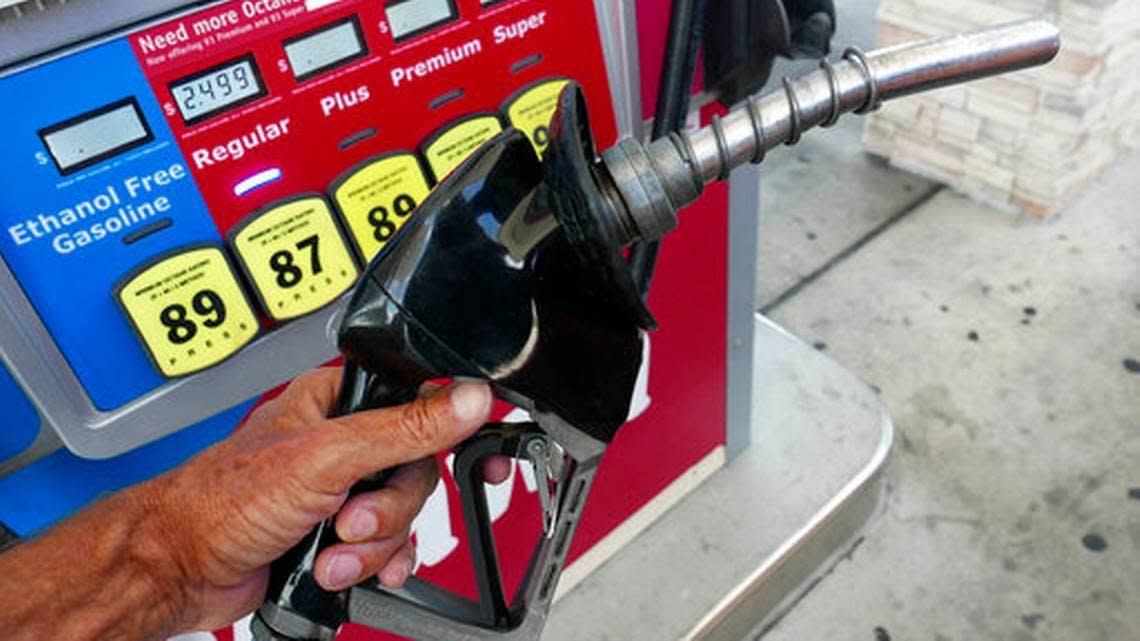Gas prices in California are expected to rise this spring. How high will they get?

$5 a gallon gasoline could be coming back soon.
“California is going to get close to, if not exceed, $5 a gallon by Memorial Day,” predicted Patrick De Haan, head of petroleum analysis at GasBuddy, which tracks fuel price trends.
California’s average price for a gallon of regular unleaded gasoline Wednesday was $4.65, up about a penny from a week earlier and down 9 cents from a year ago, AAA found.
Local averages included Sacramento, $4.47; Fresno, $4.44; Modesto, $4.31;Merced, $4.43 and San Luis Obispo area, $4.82.
The two big factors likely to most affect California’s gasoline prices in the near future are the switch to a summer blend of gasoline and unforeseen risks to supplies.
California gasoline prices tend to be much higher than the national average — $3.27 for a gallon of regular Wednesday — partly because of its gasoline taxes, which are among the nation’s highest, and the need to meet the state’s tough environmental standards.
The more expensive summer blend of gasoline, aimed at meeting those standards, is more costly to produce. The switch to that blend has already begun in some parts of the state.
“It does have a major impact,” said Sanjay Varshney, professor of finance at California State University, Sacramento.
How much will drivers drive?
Demand is difficult to forecast. Nationally, demand dropped last week. If the economy continues at its current, often languid pace, experts don’t see a surge in demand.
“The California unemployment rate is hovering around 5 percent and (interest) rates are still at a generational high. Provided that these conditions exist, I do not see prices climbing this spring,” said Gokce Soydemir, Foster Farms endowed professor of business economics at California State University, Stanislaus.
California’s unemployment rate in December, the latest figure available, was 5.1%, the 49th highest state rate in the country.
The federal Energy Information Administration agreed. It predicts that drivers will use less gasoline per capita this year and consumption should hit a two-decade low.
“U.S. motorists are driving less because they aren’t commuting to work every day, newer gasoline-fueled vehicles are more efficient, and there are more electric vehicles on the road,” said EIA Administrator Joe DeCarolis. “Put those trends together with high gasoline prices and high inflation, and we find that U.S. motorists are using less gasoline.”
EIA saw the price of oil rising as much as $9 a barrel this year. Oil Wednesday was trading around $80 a barrel. A barrel is 42 gallons of oil.
While the turmoil in the Middle East so far has not had a major impact on consumer prices, EIA said the”risks of supply disruptions and price volatility are heightened amid potential conflict spreading in the Middle East.”
Risks to the forecast
The risk that prices could climb even higher involves the unforeseen. Last fall, disruptions at some state refineries helped send prices soaring over $6 a gallon. Harsh weather could impact refineries. So could a jump in demand if the economy begins to grow more than anticipated.
“In the short run there could be some price increases, especially if we have to deal with refinery (issues) as summer demand kicks in,” said Varshney.
“Things are fairly mundane now,” said De Haan. “But the first sign of refinery trouble could cause a jump.”
California has been spared much of the big increase that’s been felt recently in other parts of the nation.
“After months of barely budging more than a few cents, the national average for pump prices moved into the fast lane,” AAA reported last week.
Refinery shutdowns on the Gulf Coast and particularly at an Indiana BP-Whiting refinery, hurt by a power outage, were key reasons for an unusual 12 cents a gallon jump nationally last week.
California, though, gets most of its products from state refineries, which produce a cleaner fuel in order to meet state environmental standards.

